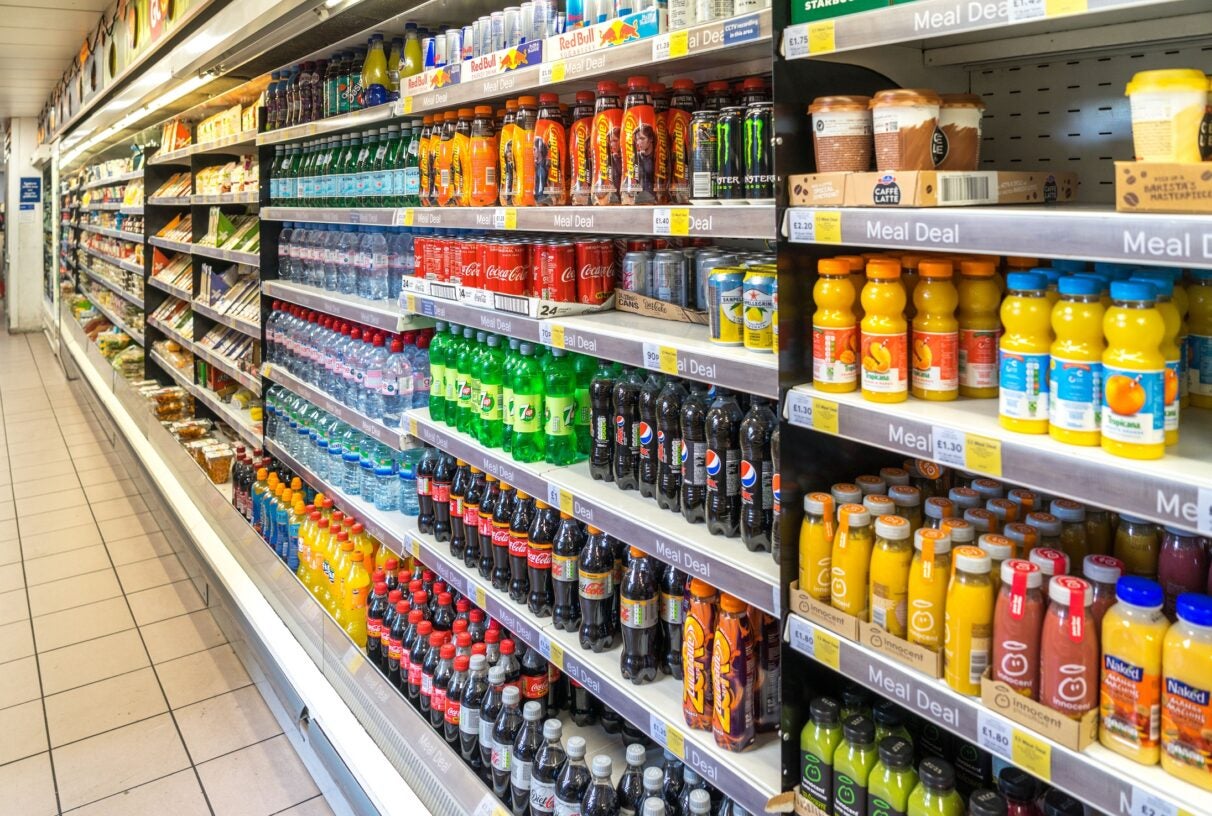
UK grocery inflation eased again in September but as one industry analyst described, costs cooled from “very high levels to high”.
Prices for food and soft drinks rose 12.1% in the 12 months through September, retreating from 13.6% in August, according to the Office for National Statistics’ consumer price index (CPI) measure of grocery inflation. The trajectory continued to soften from July’s 14.9% pace.
Month-on-month, prices actually fell, dropping 0.2% compared to a 0.3% increase in August and 1.1% in September 2022. The ONS reported today (18 October) that the decline was the first since September 2021.
“UK food inflation on all measures is easing back from very high levels to high,” Clive Black, a director at UK investment company Shore Capital, wrote in a research note this morning, predicting a CPI grocery rate of around 9-11% by year-end and an “anticipated” 4-6% by the end of 2024.
“The trajectory is clear, reflecting real competitive intensity in the UK food system as year-on-year comparatives work through, and the upward cost of goods pressure ease but do not disappear, noting the time lag for cost recovery to often take place. We expect disinflation to persist…so lower inflation, not deflation.”
Black added: “We see disinflation evolving to a point where UK ONS CPI food inflation will ease into high single-digits in H1 2024, and against favourable positive comparatives low-to-mid single digits in H2.”
The ONS’ CPIH measure of food and non-alcoholic beverages prices rose 12.2% last month on an annualised basis, down from 13.6% in August and off a peak of 19.2% in March 2023, which the statistics agency said was the fastest pace in 45 years.
ONS said the annual rate represented a sixth straight month of easing, as the CPIH gauge dropped 0.1% month-on-month versus a 1.1% increase.
Karen Betts, the CEO of the UK’s Food and Drink Federation, said the cooling in grocery costs brings some “relief for households” but emphasised the challenges manufacturers are still facing from weather-related events and disruptions from the ongoing war in Ukraine.
She pointed to energy costs bringing some respite, although concern has surfaced over a resurgent rise in oil prices if the war playing out in Israel and Gaza embroils other Middle Eastern countries.
“Energy is embedded in everything food and drink businesses do, and so recent lower energy costs are welcome, which have driven down logistics costs too. However, other costs remain stubbornly high and these have been exacerbated by wildfires, heatwaves and flooding across parts of Europe this summer,” Betts said in a statement.
“This has reduced fresh produce yields and driven up prices for sugar and olive oil in particular. Unpredictable weather elsewhere in the world is also impacting commodity prices, such as cocoa, and the new Black Sea corridors used by Ukraine for shipping grain are proving significantly more expensive than when the Black Sea Grain Deal was in place, which risks pushing up grain prices again.”
Betts’s concerns were borne out with the ONS headline measure of inflation (CPI) holding at 6.7% in the 12 months through September and the CPIH index remaining at 6.3%.
Month-on-month, CPI held at 0.5% while CPIH ticked up to 0.5%, from 0.4%.
Sugar prices, meanwhile, reached a 13-year high in September largely due to the El Niño weather pattern, the UN’s Food and Agricultural Organization reported. Other commodity costs generally retreated, including vegetable oils and dairy.


